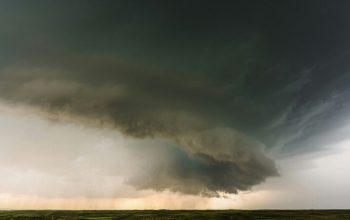Mother’s Day is a holiday honoring motherhood that is observed in different forms throughout the world. In the United States, Mother’s Day 2022 will occur on Sunday, May 8. The American incarnation of Mother’s Day was created by Anna Jarvis in 1908 and became an official U.S. holiday in 1914.
Once a major tradition in the United Kingdom and parts of Europe, this celebration fell on the fourth Sunday in Lent and was originally seen as a time when the faithful would return to their “mother church”—the main church in the vicinity of their home—for a special service. Over time the Mothering Sunday tradition shifted into a more secular holiday, and children would present their mothers with flowers and other tokens of appreciation. This custom eventually faded in popularity before merging with the American Mother’s Day in the 1930s and 1940s.
The origins of Mother’s Day as celebrated in the United States date back to the 19th century. In the years before the Civil War, Ann Reeves Jarvis of West Virginia helped start “Mothers’ Day Work Clubs” to teach local women how to properly care for their children. These clubs later became a unifying force in a region of the country still divided over the Civil War. In 1868 Jarvis organized “Mothers’ Friendship Day,” at which mothers gathered with former Union and Confederate soldiers to promote reconciliation.
Another precursor to Mother’s Day came from the abolitionist and suffragette Julia Ward Howe. In 1870 Howe wrote the “Mother’s Day Proclamation,” a call to action that asked mothers to unite in promoting world peace. “While the war was still in progress,” she wrote, she keenly felt the “cruel and unnecessary character of the contest.” She believed, as any woman might, that it could have been settled without bloodshed. Howe wondered, “Why do not the mothers of mankind interfere in these matters to prevent the waste of that human life of which they alone bear and know the cost?” In 1873 Howe campaigned for a “Mother’s Peace Day” to be celebrated every June 2.
The official Mother’s Day holiday arose in the 1900s as a result of the efforts of Anna Jarvis, daughter of Ann Reeves Jarvis. Following her mother’s 1905 death, Anna Jarvis conceived of Mother’s Day as a way of honoring the sacrifices mothers made for their children. In May 1908 she organized the first official Mother’s Day celebration at a Methodist church in Grafton, West Virginia. Following the success of her first Mother’s Day, Jarvis, who remained unmarried and childless her whole life, resolved to see her holiday added to the national calendar. Arguing that American holidays were biased toward male achievements, she started a massive letter writing campaign to newspapers and prominent politicians urging the adoption of a special day honoring motherhood. Jarvis persistence paid off in 1914 when President Woodrow Wilson signed a measure officially establishing the second Sunday in May as Mother’s Day.
The white carnation became the official flower of the holiday shortly after Jarvis’ own mother died. On May 10, 1908 — three years after that loss — Jarvis sent 500 white carnations to Andrews Methodist Episcopal Church in her mother’s honor for that first Mother’s Day celebration, according to Time Magazine. Jarvis compared that flower’s shape and life cycle to a mother’s love. “The carnation does not drop its petals, but hugs them to its heart as it dies, and so too, mothers hug their children to their hearts, their mother loves never dying.”
While versions of Mother’s Day are celebrated worldwide, traditions vary depending on the country. In Thailand, for example, Mother’s Day is always celebrated in August on the birthday of the current queen, Sirikit. Another alternate observance of Mother’s Day can be found in Ethiopia, where families gather each fall to sing songs and eat a large feast as part of Antrosht, a multi-day celebration honoring motherhood.
Mother’s Day has endured. It serves now, as it originally did, to recognize the contributions of women. Mother’s Day, like the job of “mothering,” is varied and diverse. Perhaps that is only appropriate for a day honoring the multiple ways women find to nurture their families, and the ways in which so many have nurtured their communities, their countries, and the larger world.







